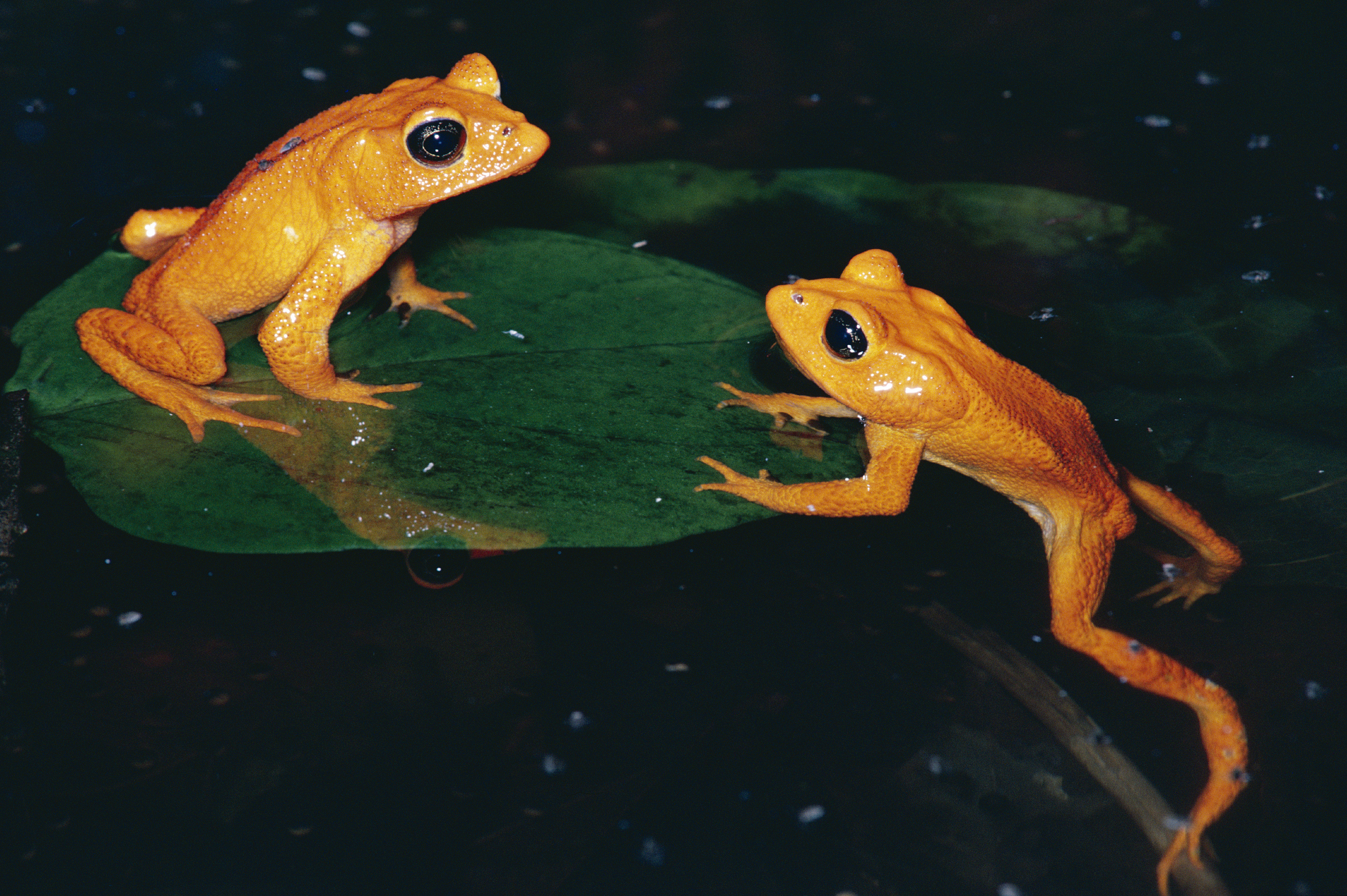Golden toad is an extinct brightly colored toad of the mountain rain forest of Costa Rica, a country in Central America. The golden toad lived in the Monteverde Cloud Forest Reserve, at elevations of 4,900 to 5,200 feet (1,500 to 1,600 meters). Golden toads were last seen in 1989.

Male golden toads were orange to reddish orange in color, and females were dark green to black with red spots. Females were slightly larger than males, 1 3/4 to 2 1/4 inches (4.3 to 5.6 centimeters) long. Males grew 1 1/2 to 2 inches (3.8 to 4.8 centimeters) long.
Golden toads spent most of their life underground. They came to the surface only briefly to breed, after heavy rains in March to June. Males outnumbered females 8 to 1 at breeding sites. As a result, multiple males attempted to breed with the same female at the same time. A female golden toad laid between 200 and 400 eggs after mating. Tadpoles hatched from the eggs after several days. The tadpoles may have lived off yolk from the egg without feeding until metamorphosis which occurred four to five weeks later. Metamorphosis is the process of changing from a larva to an adult.
The cause of the golden toad’s extinction is not completely known. But scientists believe many factors may have played a role, including disease caused by chytrid fungus; climate change; deforestation; and pollution.
